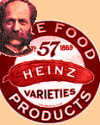
On 14 May 1919, Henry John Heinz died, the American businessman who founded the now internationally known H.J. Heinz Co.
In Financial Giants of America (1922), the biography of Henry John Heinz describes a gentlemanly businessman that cared for the welfare of his employees. It gives a brief background to how he came to start, and nurture, such a highly successful condiment company.

On 14 May 1918, James Hardy was born, the American surgeon who was a pioneer in human organ transplantation. He performed the first heart transplant in a human being in 1964 (the donor heart was from a chimpanzee). He led the medical field in the first lung, liver, and heart transplants as well as developing vascular and heart surgery.
Dr. Hardy performed surgery for nearly half a century and made monumental contributions in the field of medicine.Today's book pick is: The Academic Surgeon, by James Daniel Hardy. The autobiography of this remarkable doctor gives a fascinating look into his life, during one of the most exciting periods in medical history.
It is available from Amazon, typically about New from $58.45. Used from $11.52. (As of earlier time of writing - subject to change.)
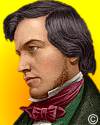 | There are few substances to which it [iron] yields in interest, when it is considered how very intimately the knowledge and properties and uses is connected with human civilization. |
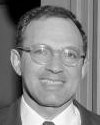 | The total number of people who understand relativistic time, even after eighty years since the advent of special relativity, is still much smaller than the number of people who believe in horoscopes. |
 | To do a common thing uncommonly well brings success. A favorite maxim. |
| Before you look at today's web page, see if you can answer some of these questions about the events that happened on this day. Some of the names are very familiar. Others will likely stump you. Tickle your curiosity with these questions, then check your answers on today's web page. | |
| Births | |
 | Yuval Ne’eman, born 14 May 1925 is an Israeli theoretical physicist, who worked independently of Gell-Mann but almost simultaneously (1961) devised a method of grouping baryons in such a way that they fell into logical families. The scheme grouped mesons and baryons (e.g., protons and neutrons) into multiplets of 1, 8, 10, or 27 members on the basis of various properties. What is the name given to the scheme? |
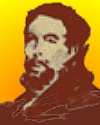 | Mikhail Semyonovich Tswett, born 14 May 1872, was a Russian botanist. He developed and named a technique of separating plant pigments by extracting them from leaves with ether and alcohol and percolating the solution through a column of calcium carbonate. The components of the mixture moved at different rates, producing a series of bands. What is the name of this technique developed by Tswett? |
| Deaths | |
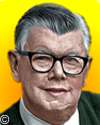 | An American electrical engineer (1902-1978) is best known for founding the world’s first mass-producer of business jet aircraft. Beginning in 1930, over a 20 year period, he secured more than 100 patents for aircraft radios, communications and navigation equipment. His other inventions include the miniature automatic pilot for aircraft, the first commercial automobile radio, and the eight-track stereo tape player. What is the name of this inventor? |
 | Henry John Heinz (1844-1919) founded H.J. Heinz Co. His entrepreneur and business genius had roots in post-Civil War Pittsburgh, where iron, steel and glass factories were forging industrial America. By age 12 he was peddling produce from the family garden. At 25, in 1869, he and a friend launched Heinz & Noble. Its first product: Henry's mother's grated horseradish, bottled in clear glass to reveal its purity. Heinz & Noble thrived until an overabundance of crops in 1875 brought bankruptcy. But Henry plunged back in, eventually building a model factory complex along the Allegheny River. By 1896, at only 52, the pickle king had become a millionaire and celebrity. What was his famous Heinz slogan? |
| Events | |
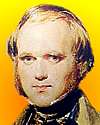 | Charles Darwin began writing his book, The Origin of Species, sitting in the study of his country home in Down, England. In which decade did Darwin begin his book? |
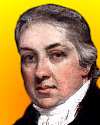 | In 1796, an English physician administered the first vaccination against smallpox to an eight-year-old boy. He inoculated an 8-year-old boy, James Phipps, with material from the sores of dairymaid Sarah Nelmes who had a mild case of cowpox. He subsequently tested the boy’s resistance to smallpox, which fortunately was successful. This tested a conventional wisdom he had heard that those who had survived cowpox seemed to be immune to the deadly smallpox disease. What is the name of the English physician who first administered an inoculation against smallpox? |
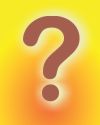 | In 1878, the a U.S. trademark was registered for the petroleum jelly developed by an English-born chemist Robert Augustus Chesebrough. He began, in 1859, with an interest in the petroleum oil boom. His chemist's curiosity was caught by a pasty residue that stuck to driller’s rods and clogged their pumps. Workers had found it was practical to use on burns and cuts to promote healing. Cheseborough experimented to extract and purify the useful ingredient, which he called “petroleum jelly.” What was the name trademarked for the petroleum jelly product? |
Fast answers for the previous newsletter for May 13: his discovery the malarial parasite in the gastrointestinal tract of the Anopheles mosquito showed how malaria was transmitted by Anopheles. • reaper • Joseph Henry • Velcro • four • table knife.
 If you enjoy this newsletter, the website, or wish to offer encouragement or ideas, please send feedback by using your mail reader Reply button.
If you enjoy this newsletter, the website, or wish to offer encouragement or ideas, please send feedback by using your mail reader Reply button. Your click on a Facebook, StumbleUpon, or other social button on the site webpages is also a welcome sign of appreciation. Thank you for using them.
© This newsletter is copyright 2020 by todayinsci.com. Please respect the Webmaster's wishes and do not put copies online of the Newsletter — or any Today in Science History webpage. (If you already have done so, please remove them. Thank you.) Offline use in education is encouraged such as a printout on a bulletin board, or projected for classroom viewing. Online, descriptive links to our pages are welcomed, as these will provide a reader with the most recent revisions, additions and/or corrections of a webpage. For any other copyright questions, please contact the Webmaster by using your mail reader Reply button.
--
If you do not want to receive any more newsletters, Unsubscribe
To update your preferences and to unsubscribe visit this link
Executive Real Estate Business Class
-
"It was like a man with wings. It wasn't like anything you'd see on TV or in a monster movie." ...
About the publisher
Search This Blog
Blog Archive
-
▼
2021
(585)
-
▼
May
(62)
- Tonight: Back-to-Back Premieres
- On This Day for May 31 - Adolf Eichmann hanged, Cl...
- Newsletter for Monday 31 May.
- On This Day for May 30 - Joan of Arc burned at the...
- TONIGHT at 8/7c: The Tulsa Race Massacre Revealed
- Newsletter for Sunday 30 May.
- Bundle Up For The Summer!
- On This Day for May 29 - Mount Everest summit reac...
- Newsletter for Saturday 29 May.
- On This Day for May 28 - Amnesty International fou...
- Newsletter for Friday 28 May.
- On This Day for May 27 - Founding of St. Petersbur...
- Newsletter for Thursday 27 May.
- On This Day for May 26 - Martin Luther declared a ...
- Newsletter for Wednesday 26 May.
- On This Day for May 25 - U.S. Constitutional Conve...
- Newsletter for Tuesday 25 May.
- Behind Every Empire There’s a Titan
- On This Day for May 24 - Opening of the Brooklyn B...
- On This Day for May 23 - Tibet annexed by China, C...
- Newsletter for Sunday 23 May.
- The Tulsa Race Massacre, 100 Years Later
- On This Day for May 22 - Roman Emperor Constantine...
- Newsletter for Saturday 22 May.
- On This Day for May 21 - First nonstop solo transa...
- Newsletter for Friday 21 May.
- On This Day for May 20 - U.S. Homestead Act signed...
- Newsletter for Thursday 20 May.
- On This Day for May 19 - Ringling Bros. Circus for...
- Newsletter for Wednesday 19 May.
- Learning This Fun Doesn't Need A Summer Break
- On This Day for May 18 - Eruption of Mount St. Hel...
- Newsletter for Tuesday 18 May.
- On This Day for May 17 - School segregation outlaw...
- Newsletter for Monday 17 May.
- Follow the trail of 400 facts!
- On This Day for May 16 - Warsaw Ghetto Uprising su...
- Newsletter for Sunday 16 May.
- On This Day for May 15 - Edith Cresson appointed F...
- Newsletter for Saturday 15 May.
- On This Day for May 14 - Declaration of Israel's s...
- Newsletter for Friday 14 May.
- On This Day for May 13 - U.S. declaration of war o...
- Newsletter for Thursday 13 May.
- Ridiculous History You Want To Know About!
- On This Day for May 12 - First flight over the Nor...
- Newsletter for Wednesday 12 May.
- On This Day for May 11 - “New Rome” established by...
- Newsletter for Tuesday 11 May.
- On This Day for May 10 - Nelson Mandela inaugurate...
- Newsletter for Monday 10 May.
- On This Day for May 9 - Fourth and final voyage of...
- On This Day for May 7 - Theatre Royal opened, Pyot...
- On This Day for May 5 - Mexican victory in the Bat...
- On This Day for May 4 - Four students shot at Kent...
- On This Day for May 3 - Margaret Thatcher elected ...
- Newsletter for Monday 3 May.
- TONIGHT: The Bin Laden Raid, Revealed
- On This Day for May 2 - Lou Gehrig's 2,130-game st...
- Newsletter for Sunday 2 May.
- On This Day for May 1 - May Day founded, Arthur We...
- Newsletter for Saturday 1 May.
-
▼
May
(62)
-
Blogroll
-
About
HistoryFact










0 comments:
Post a Comment